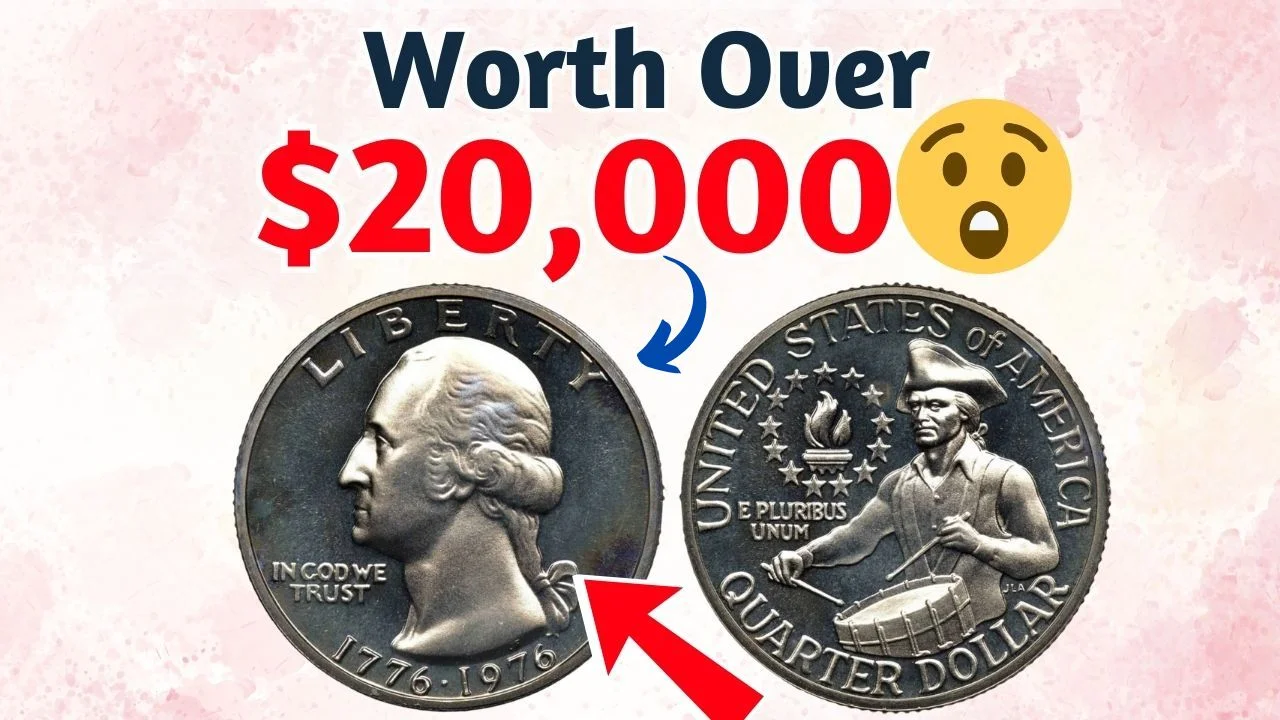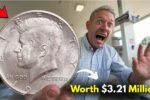The 1976 Quarter That’s Now Worth: Many people think of coins as simple everyday items, but some of them hold surprising secrets. One such coin is the 1976 quarter. For years, it seemed like any other pocket change. But recently, collectors have discovered that some of these quarters are worth a lot of money—more than $20,000 in fact. This has left many people digging through their old coin jars in search of hidden riches.
What Made the 1976 Quarter Special?
The year 1976 was America’s 200th birthday—also called the Bicentennial. To celebrate this big moment, the U.S. Mint released special quarters with a different design than usual. Instead of the usual eagle, the back of the coin showed a drummer boy and a torch. These were called “Bicentennial quarters,” and millions were made. Most were regular coins. But a few rare ones were made in a different way or with small mistakes. These are the quarters that can be worth a fortune today.
The Rare Types That Collectors Love
Not every 1976 quarter is valuable. Most are still worth just 25 cents. But the rare ones—such as those made with silver, coins with minting errors, or proof versions—are what collectors search for. A few were made on silver planchets (coin blanks), even though most were made from regular copper-nickel. Some even have mistakes like double stamping or off-center prints. These rare types are what bring in the big bucks.
How One Coin Became Worth Over $20,000
One of the most talked-about 1976 quarters sold for more than $20,000. What made it so valuable? It was struck on a silver planchet and had a sharp, flawless design. It was also kept in perfect condition, which is extremely rare for a coin that old. Professional coin grading experts gave it a high grade, which increased its value even more. Coins like this don’t appear often, which is why they are so expensive.
Where Can You Find One of These Quarters?
The good news is that these valuable quarters are not locked away in museums. Some might still be sitting in old piggy banks, hidden in drawers, or passed down in coin collections. If you come across a 1976 quarter, take a good look at it. If it feels heavier or has a shiny silver surface, or if it looks a bit strange or off-center, it could be one of the rare ones.
How to Tell If Your 1976 Quarter is Rare
It’s not always easy to know if a coin is valuable just by looking at it. Experts use special tools and grading systems. But there are a few signs to watch for. If the coin looks brand new or different from others, or if you spot an unusual mark or shine, it’s worth getting checked. Many coin shops offer free or low-cost evaluations.
Why People Love Collecting Coins
Coin collecting has become more than just a hobby. For many people, it’s a way to connect with history and even make money. Each coin has a story, and sometimes, that story leads to an unexpected reward. The 1976 quarter is just one example of how something small and forgotten can suddenly become a treasure.
Don’t Throw Away Your Change Just Yet
Next time you get change back from a store, think twice before tossing it into a jar or spending it without a second glance. One of those coins could be a hidden gem. The 1976 quarter proves that there’s more to coins than meets the eye—and sometimes, a simple coin can change your luck forever.
Value Comparison Table for 1976 Quarters
| Type of 1976 Quarter | Estimated Value (USD) |
|---|---|
| Regular Circulation Quarter | $0.25 (face value) |
| Bicentennial Silver Proof Quarter | $5 to $20 |
| Error Quarter (misprint/misstrike) | $100 to $1,000+ |
| High-Grade Silver Quarter (MS67+) | $2,000 to $20,000+ |
Quick FAQs
Q: Is every 1976 quarter worth a lot of money?
No, most are worth only face value. Only rare types with silver content or minting errors are valuable.
Q: How can I tell if my 1976 quarter is special?
Look for silver color, unusual markings, or very sharp details. Having it graded by a professional is the best way to know.
Q: Where can I sell a rare quarter?
You can sell it to coin collectors, auction houses, or online marketplaces like eBay—especially if it’s been professionally graded.
Q: Why was there a different design in 1976?
The U.S. celebrated its 200th birthday (Bicentennial) in 1976, so special coin designs were created for that year.




